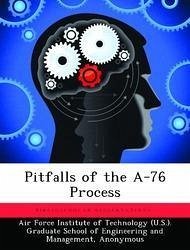The DoD and the Air Force have turned to outsourcing support functions as a way to reduce both costs and the number of soldiers required to provide Support for combat forces. The process used to determine whether it is economically feasible to outsource a function is called A-76, after the circular that describes the process. Outsourcing, like any other tool, must be used in the right way, in the correct environment if the desired goal to be reached. To understand what these goals are, it is necessary to examine past case studies where outsourcing has worked, to determine why outsourcing works. It is then necessary to see if the United States implements policy in such a manner as to ensure the success of the driving forces of outsourcing. In addition, it is necessary to review the A-76 from initiation to implementation of either the Contractor or the Most Efficient Organization (MEO) to see if the military has set up policy and implementation to ensure that outsourcing produces the best results possible. It is finally necessary to examine what happens after the A-76 is completed to see how the remaining force structure is affected. This work has been selected by scholars as being culturally important, and is part of the knowledge base of civilization as we know it. This work was reproduced from the original artifact, and remains as true to the original work as possible. Therefore, you will see the original copyright references, library stamps (as most of these works have been housed in our most important libraries around the world), and other notations in the work. This work is in the public domain in the United States of America, and possibly other nations. Within the United States, you may freely copy and distribute this work, as no entity (individual or corporate) has a copyright on the body of the work. As a reproduction of a historical artifact, this work may contain missing or blurred pages, poor pictures, errant marks, etc. Scholars believe, and we concur, that this work is important enough to be preserved, reproduced, and made generally available to the public. We appreciate your support of the preservation process, and thank you for being an important part of keeping this knowledge alive and relevant.
Bitte wählen Sie Ihr Anliegen aus.
Rechnungen
Retourenschein anfordern
Bestellstatus
Storno






